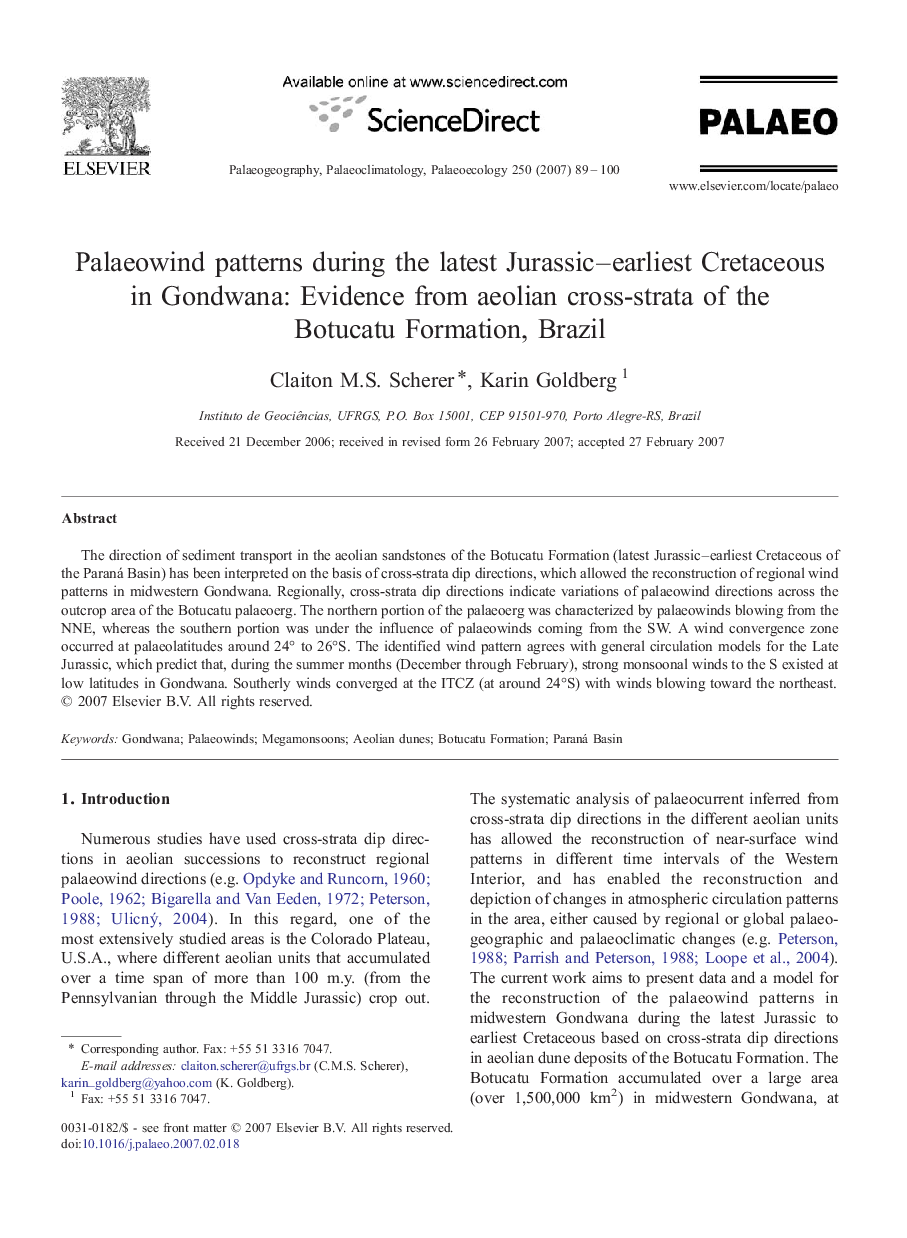| Article ID | Journal | Published Year | Pages | File Type |
|---|---|---|---|---|
| 4469004 | Palaeogeography, Palaeoclimatology, Palaeoecology | 2007 | 12 Pages |
The direction of sediment transport in the aeolian sandstones of the Botucatu Formation (latest Jurassic–earliest Cretaceous of the Paraná Basin) has been interpreted on the basis of cross-strata dip directions, which allowed the reconstruction of regional wind patterns in midwestern Gondwana. Regionally, cross-strata dip directions indicate variations of palaeowind directions across the outcrop area of the Botucatu palaeoerg. The northern portion of the palaeoerg was characterized by palaeowinds blowing from the NNE, whereas the southern portion was under the influence of palaeowinds coming from the SW. A wind convergence zone occurred at palaeolatitudes around 24° to 26°S. The identified wind pattern agrees with general circulation models for the Late Jurassic, which predict that, during the summer months (December through February), strong monsoonal winds to the S existed at low latitudes in Gondwana. Southerly winds converged at the ITCZ (at around 24°S) with winds blowing toward the northeast.
